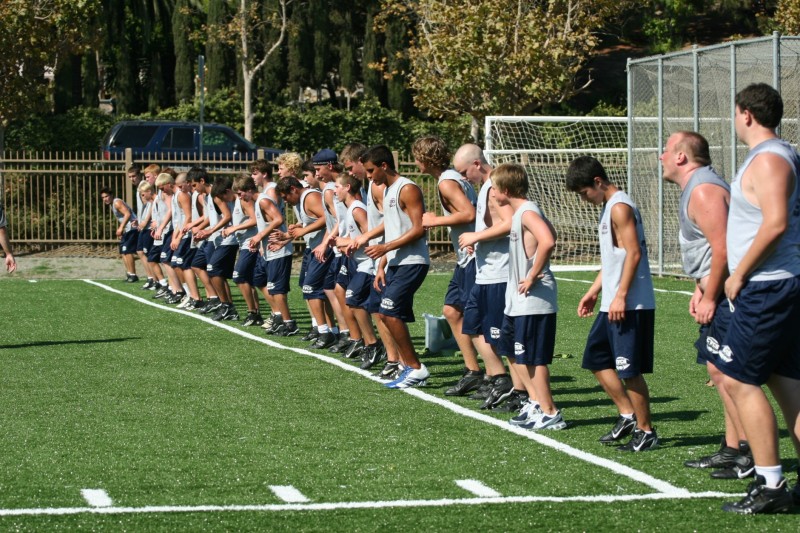
24 ESSENTIAL DRILL REMINDERS TO MAKE YOUR PRACTICE MORE EFFICIENT
Source: Dennis Moon, Wautoma High School, Wisconsin
1. Every drill should be organized as to Purpose, Procedure, and Equipment needed to execute the drill. Make sure the drill fits our teaching progression.
2. Create an efficient drill set-up. Take into account the following before you start a drill:
a. space needed
b. equipment needed
c. yard lines needed
d. drill intensity
e. number of reps
f. starting and finishing commands
3. Make sure players know how the drill applies to what you are teaching. Players must know how they will implement what is learned in the drill to the game of football. Teach the purpose of the drill!
4. Players should know the name of each drill you use.
5. All quarterback drills should start with a snap from center or a simulated snap.
6. Players should know the speed at which the drill will be performed at: full speed, half speed, thud, bar tag, touch the ball carrier, etc.
7. Offensive drills should start with our snap count. Defensive drills should start with movement.
8. Demand that players who are not performing the drill are watching and learning. If you correct, teach, or praise a player or group of players, every other player should also learn from that.
9. Make sure your drill area is safe. Watch out for goal posts, benches, fences, other groups, etc.
10. Demand intensity! Effort below 100% will have a negative impact.
11. Get quality rather than quantity. Take time to teach and correct.
12. Keep in mind your drill progression. Plan out your teaching progression, which will lead to your end product. Take into account the implementation of the offense, defense, and kicking game.
13. Utilize the managers. They can help videotape, chart, snap, or set-up drills.
14. Avoid going too long with drills. Keep them short and intense. Keep the tempo fast and upbeat.
15. Make sure you are able to reach your goals each practice. Have one or two alternative goals each practice in case there is extra time.
16. Correct in a positive manner. Avoid negative words such as “don’t or “not”
17. Keep lines short! Break a long line into 3 or 4 lines. Players learn by doing.
18. Inform the players on the amount of time of the drill or the number of reps they will be doing. It helps psychologically to know how many reps there will be.
19. Be alert to the players FQ – Frustrating Quotient. Be careful not to destroy the player’s initiative, confidence, and enthusiasm.
20. Coach on the run – avoid stopping a drill for a dissertation at the player’s expense.
21. When correcting a player, do not merely say “you missed your block”, etc. Point out the reason why. “You missed your block because . . . . . . . . . . .”.
22. Develop and use expressive terminology. Standardize your teaching words. Consistent word and phrase terminology is important.
23. Make sure you incorporate “finish” at the end of each drill. For example, running backs should always end with a cut or a linebacker should always pick up a fumble or form tackle at the end of a drill.
24. You must show enthusiasm, effort, and use constructive communication in each drill. Your players will “show your colors”.


